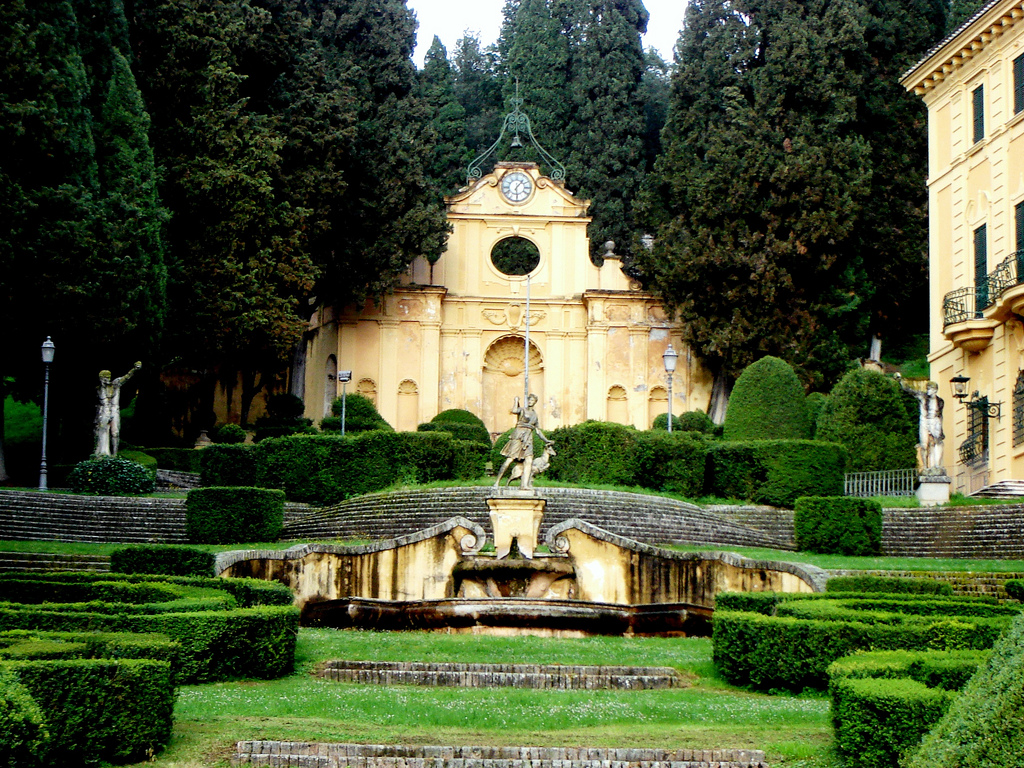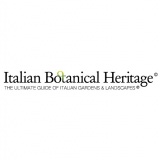
The current complex of Villa Fidelia overlooks, in a very scenic location, the road that runs through the Valle Umbra separating it from the first hills rich of historical settlements and prestigious olive crops.
The complex was commissioned in the sixteenth century by the Urbani family and was built on the remains of a sanctuary belonging to a set of sacred classical era (dating from the fourth century). In the eighteenth century, the villa passes to Teresa Pamphili Grillo who transforms it completely. Today, the villa has a rectangular plan, rises on five floors, of which only three above ground because of the slope of the land.
BAROQUE GARDEN
The baroque garden or Vesuvius Garden, located aside of the villa, stretches on a gentle slope, bordered on the right and on the left by a double row of cypresses. Among the steps tiled there's a portico with a fountain, topped by Diana the Huntress and, further on, the cistern with the clock. The particular shapes of boxwood hedges seem to be inspired by the passions of the former owners. The husband, lover of horses, wanted that the hedges that embrace the flowerbeds were in the form of spurs; his wife, a lover of music, preferred the shape of musical notes in the vicinity of the front door of the villa. Next, it was the engineer Decio Costanzi who turned them into rabbits.
THE ITALIAN GARDEN
Set up following the restructuring desired by Teresa Pamphili Grillo, it is currently made up of four large flowerbeds enclosed by box hedges whose form seems to have been modified over time, intervalate from boxwood globes (Buxus semrevirens). The study of the plants shows that the domestic flower beds consist of hedges from the year 1920, while much more elderly appear to be external ones. In summer and spring 70 lemon trees adorn the garden, placed on pedestals inserted between the hedges.
Only a few specimens of roses are a testimony of the time when, under the ownership of Decio Costanzi, the interior of the flowerbeds were totally occupied by this type of flowers. Upstream, the garden is surrounded by a high wall with niches and just above opens the oaks park, bordered by rows of cypresses and pines (Pinus Pinaster).
AND MORE
Next to the baroque garden is the outdoor riding, consisting of a circus formed by a double crown of oaks (Quercus ilex). To complete the whole complex we have the olive grove and the park, consisting of a holm-oak grove and a forest.



